Introduction
Choosing the right harness for your Dachshund is crucial. Their unique body shape makes them special. Dachshunds have long backs and short legs, which can lead to health issues. One common concern is intervertebral disc disease (IVDD). This condition affects their spine and can be severe. A proper harness can help reduce the risk of neck and back injuries.
In this article, we aim to guide you in finding the best dog harness for your beloved Dachshund. While you’re at it, consider a Dog First Aid Kit for those unexpected boo-boos during your adventures!

Summary and Overview
When selecting a harness for your Dachshund, consider key features like fit, comfort, and material. A good harness should fit snugly but not too tightly. Look for soft materials that feel comfortable against their skin. The design should also accommodate their unique shape.
Various types of harnesses are available. No-pull harnesses help discourage pulling. Supportive harnesses offer extra support for dogs with IVDD. Everyday use harnesses are perfect for regular walks. You might also want to check out a Dog Water Bottle with Bowl to keep your pup hydrated during those long walks!
This article covers essential sections, including product recommendations, tips for measuring your dog, and features to look for in a harness. You’ll find everything you need to make an informed choice for your Dachshund.
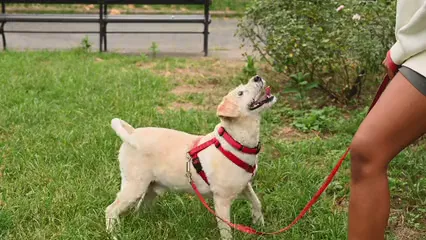
Harness Features: What to Look For
Choosing the right harness for your Dachshund is essential for their comfort and safety. With their unique body shape, some harness features are particularly important. Let’s break down what to look for.
Types of Dog Harnesses
There are various types of harnesses to consider:
– Body Harness: This type distributes pressure evenly across your dog’s body. It helps prevent strain on the neck and spine, which is critical for Dachshunds prone to IVDD. A body harness is especially useful for daily walks and can reduce the risk of injury. If you’re looking for a great option, the Gooby Comfort X Dog Harness is lightweight and perfect for everyday use!
– No-Pull Harness: Designed for dogs that tend to pull, this harness tightens slightly under the arms when your Dachshund pulls. This shifts pressure to the chest rather than the neck, making walks more manageable. It’s a great option for training. The PetSafe Easy Walk Dog Harness is a fantastic choice for those stubborn pullers.
– Back Support Harness: This harness provides extra support for Dachshunds, especially those recovering from injuries or surgeries like IVDD. These harnesses often include a handle for lifting, making them ideal for helping your dog navigate obstacles safely.
Each type has its benefits, especially for Dachshunds, considering their long backs and potential health issues.

Proper Fit
Getting the right fit is crucial. A harness that’s too tight can cause discomfort, while one that’s too loose may allow your dog to escape. To measure correctly, focus on three key areas:
1. Neck: Measure around the base of the neck, ensuring it’s snug but not tight.
2. Chest Girth: Measure the widest part of the chest. This is vital for a secure fit.
3. Length: Measure from the neck to the base of the tail to ensure the harness accommodates their length.
Proper measurements help prevent chafing and ensure comfort during walks. And while you’re at it, don’t forget a Dog Nail Clipper for those pesky nail trims!

Harness Material
The material of the harness can significantly impact your Dachshund’s comfort. Here are some common options:
– Mesh: Breathable and lightweight, mesh is great for warm weather. However, ensure it’s durable enough to withstand wear and tear.
– Nylon: This is a popular choice due to its durability and ease of cleaning. It’s often more affordable as well.
– Fabric: While offering comfort, fabric harnesses may not be as durable. They can be stylish but are best for less active dogs.
– Leather: High-quality leather harnesses provide durability and comfort but can be more expensive. They are often a long-lasting option.
Choosing the right material depends on your dog’s activity level and comfort needs. If you’re looking for a stylish yet functional option, check out the Blueberry Pet Classic Dog Harness.

User Experience
Ease of use is another critical factor. Look for harnesses that are simple to put on and take off. An easy on/off design can make walks more enjoyable for both you and your Dachshund. Features like quick-release buckles and adjustable straps can save time and hassle.
In summary, when selecting a harness for your Dachshund, consider the type, fit, material, and ease of use. These features will help ensure your dog’s comfort and safety during walks. You may also want to consider a Dog Travel Bag for those spontaneous trips!
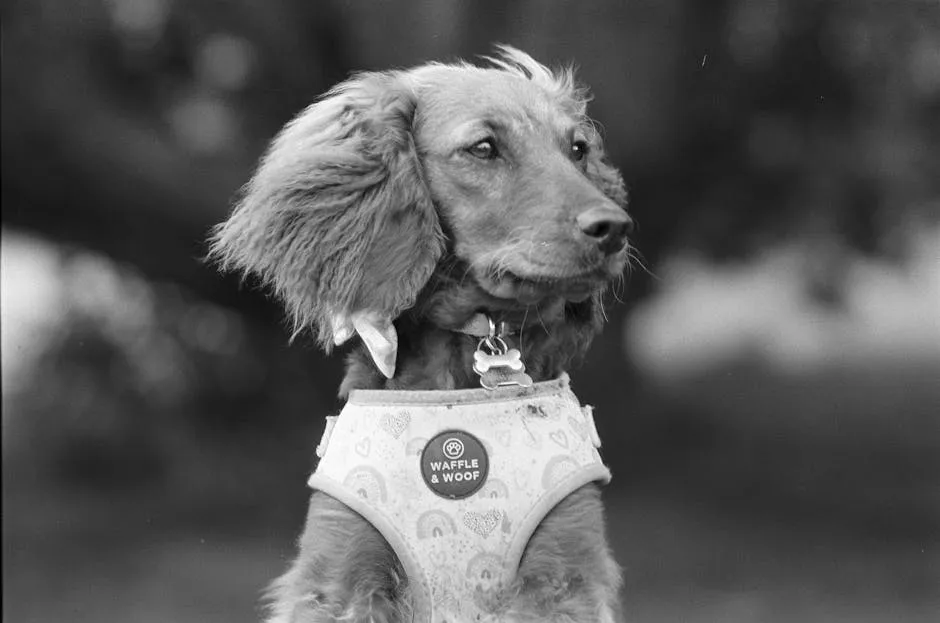
Suggested Statistics or Data
Dachshunds are prone to intervertebral disc disease (IVDD). Studies show that nearly 25% of Dachshunds develop this condition at some point. This spinal disorder can lead to severe pain and mobility issues. A properly fitted harness can significantly lower the risk of injury. Harnesses distribute pulling force evenly across the dog’s body. This helps prevent strain on the neck and spine, crucial for Dachshunds. Using a harness can provide peace of mind during walks, knowing you’re protecting your furry friend’s health. And while you’re at it, don’t forget to check out a Dog Dental Chew for maintaining that pearly-white smile!

To learn more about the right harness for your dog, check out this guide on choosing the right dog harness for different activities.
Top Recommended Harnesses for Dachshunds
Choosing the right harness for your Dachshund can be overwhelming. Below are some top recommendations that cater to their unique needs.

Best Overall Harness
Puppia Soft B Dog Harness
The Puppia Soft B Dog Harness is a favorite among Dachshund owners. It features a soft, breathable polyester fabric that keeps your pup comfortable. The harness is machine washable, making cleaning a breeze. Also, if you want to ensure their comfort, consider a Dog Cooling Vest for those hot summer days!
Pros:
- Easy to put on and take off.
- Comfortable design prevents irritation.
- Available in various colors.
Cons:
- Can feel warm in hot weather.
- Limited size options for larger Dachshunds.

Best No-Pull Harness
DJANGO Tahoe No-Pull Dog Harness
If your Dachshund tends to pull, the DJANGO Tahoe No-Pull Dog Harness is a great option. This harness has a unique design that discourages pulling effectively. It features both front and back D-rings for versatile leash attachment. You might also want to consider the RUFFWEAR Front Range Harness for added durability.
Pros:
- Reduces pulling behavior with thoughtful design.
- Adjustable straps for a perfect fit.
- Made from durable materials.
Cons:
- May take time for your dog to adjust.
- Some users may find it tricky to put on.

Best for Puppies
Velpro Dog Harness
The Velpro Dog Harness is ideal for Dachshund puppies. It’s lightweight and designed specifically for their smaller frames. The harness is made of breathable mesh, perfect for active pups. And while we’re talking about pups, a Dog Puzzle Toy can keep them engaged while you’re away!
Pros:
- Comfortable and lightweight for puppies.
- Easy to clean and maintain.
- Adjustable for a snug fit.
Cons:
- Limited color options.
- Might not fit larger pups as they grow.
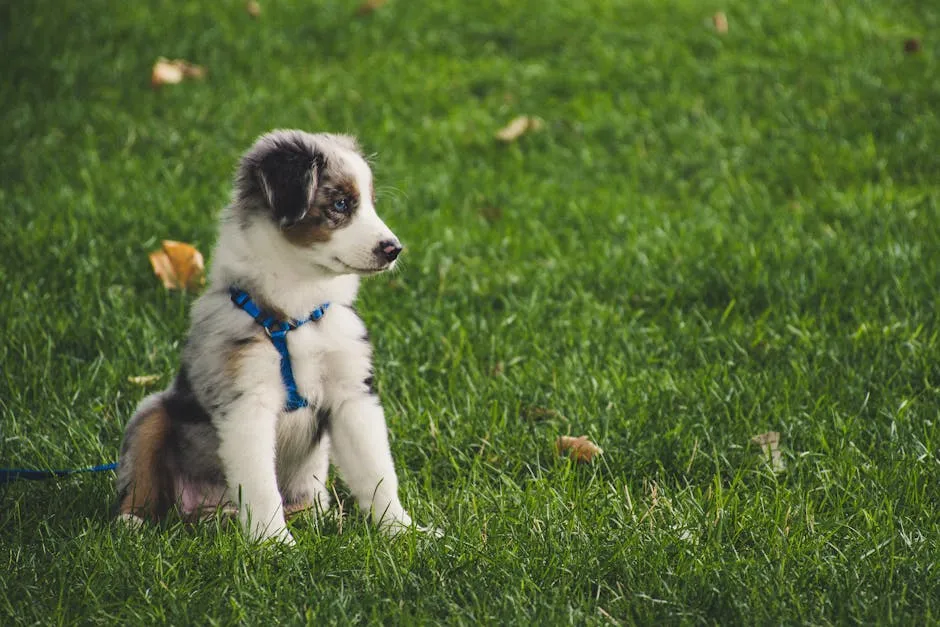
Best for Support (IVDD)
Gingerlead Dog Support and Rehab Sling
For Dachshunds with IVDD or those recovering from surgery, the Gingerlead Dog Support and Rehab Sling offers excellent support. This harness is designed to help lift your dog and reduce strain on their back. If you’re looking for additional support, consider adding a Dog Life Jacket for water safety!
Pros:
- Provides excellent support for mobility issues.
- Easy to use for both dogs and owners.
- Adjustable to fit various sizes.
Cons:
- Not intended for regular walks.
- May require some time to get used to.

Additional Options
While the above harnesses are top picks, there are other notable options worth considering. The Gooby Comfort X is lightweight and ideal for everyday use. The Slowton Dog Harness offers a soft vest design for added comfort. Each option features unique benefits, so choose one that fits your Dachshund’s personality and needs. And remember, a Dog Toy Storage Bin can help keep your home tidy!
When picking a harness, remember to consider your dog’s specific needs, such as comfort, fit, and purpose. With the right harness, you can enjoy stress-free walks while keeping your Dachshund safe and supported.

Suggested Statistics or Data
Consumer ratings provide valuable insights into product quality. For instance, the Puppia Soft B harness boasts an impressive 4.8 out of 5 stars on various pet supply sites. Many users praise its comfort and easy use. The DJANGO Tahoe harness also has over 4.5 stars, with testimonials highlighting its effectiveness in reducing pulling. These ratings reflect real experiences from Dachshund owners, making these harnesses trustworthy choices. To keep your dog entertained, a Interactive Dog Toy can be a great addition!
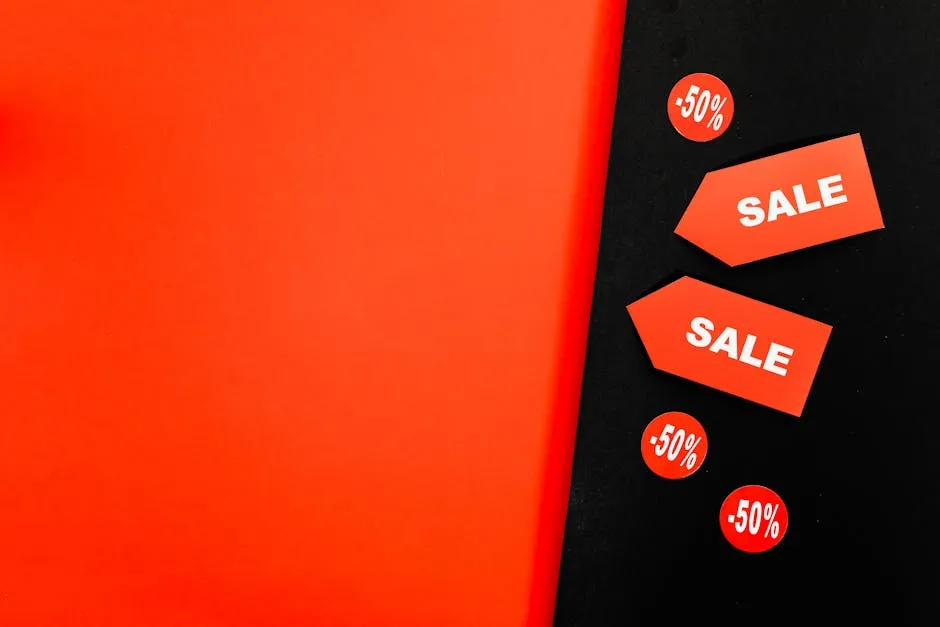
How to Measure Your Dachshund for a Harness
Step-by-Step Guide
Measuring your Dachshund for a harness is crucial for a perfect fit. Follow these simple steps:
1. Gather Tools: You’ll need a soft measuring tape and a pen.
2. Neck Measurement: Measure around the base of your dog’s neck. Ensure the tape is snug but not tight.
3. Chest Girth: Measure the widest part of your dog’s chest. This is usually just behind the front legs.
4. Length Measurement: Measure from the base of the neck to the base of the tail. This ensures the harness fits comfortably along their back.
5. Record Measurements: Write down each measurement for reference when selecting a harness.
Using these measurements will help you find a harness that fits securely without causing discomfort. And while you’re at it, don’t forget to check out a Dog Shampoo for those bath days!

Common Mistakes to Avoid
When measuring your Dachshund, avoid these common mistakes:
- Using Inaccurate Tools: Always use a flexible measuring tape. Avoid rigid tools that can’t conform to your dog’s shape.
- Not Measuring at the Right Spot: Ensure you measure around the correct areas, like the neck and chest.
- Tightening the Tape Too Much: The tape should be snug but allow for a finger to fit underneath. Too tight can lead to discomfort.
- Skipping the Length Measurement: Neglecting to measure length can result in a harness that rides up or shifts during walks.
By avoiding these mistakes, you’ll ensure a comfortable and safe fit for your furry friend. And speaking of safety, consider a Dog Seat Belt Harness for car rides!
Dog Harness vs. Collar: Which is Best?
Comparison of Benefits
Choosing between a harness and a collar can be confusing. However, for Dachshunds, harnesses offer distinct advantages. They distribute pressure evenly across the body. This reduces strain on the neck and spine, crucial for Dachshunds prone to IVDD.
Harnesses also provide better control during walks. If your Dachshund tends to pull, a harness can help redirect their energy. Unlike collars, they prevent choking or injury caused by sudden pulling.
Harnesses are also more secure. Many Dachshunds can slip out of collars, especially if excited. A well-fitted harness minimizes this risk, ensuring your dog stays safe. And for those chilly walks, consider a Dog Winter Jacket to keep them warm!
In contrast, collars are useful for holding ID tags. They can be beneficial for short walks or calm dogs. However, for active or stubborn Dachshunds, a harness is often the better choice.
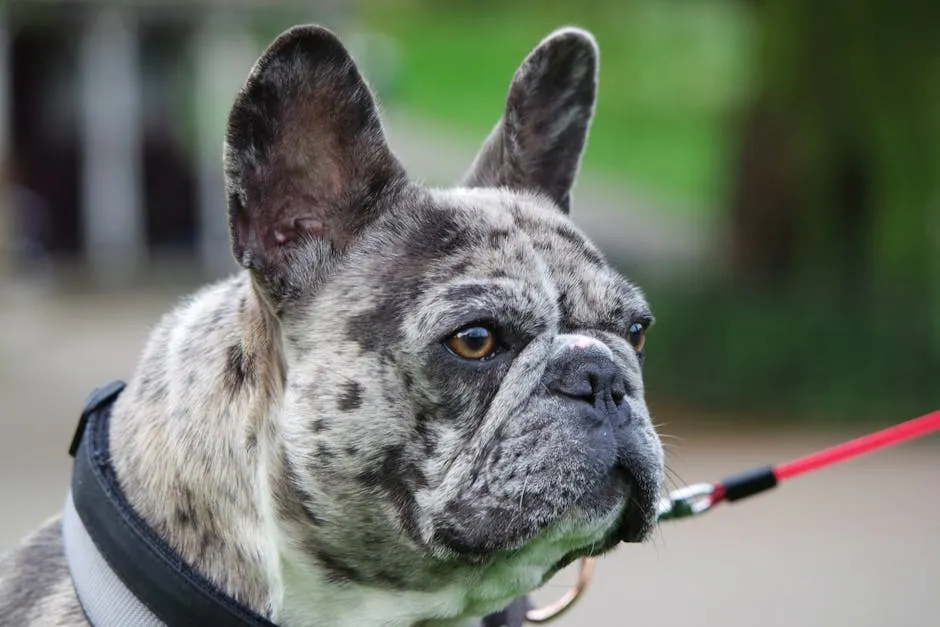
When to Use a Collar
While a harness is often the best choice for Dachshunds, collars still have their place. A collar is handy for holding ID tags. It’s essential for identification if your dog gets lost.
In low-stress situations, a collar can work well. For example, when your Dachshund is at home or in the backyard. If your dog is calm and relaxed, a collar may suffice for short walks.
However, it’s crucial to choose the right type of collar. A flat collar is generally safer than a choke collar. Always ensure it fits snugly but allows for one or two fingers underneath. This prevents slipping and reduces the risk of choking.
Conclusion
Selecting the right harness for your Dachshund is vital. With their unique body shape, a suitable harness can prevent injuries. Always consider your dog’s individual needs when choosing. And while you’re at it, don’t forget to stock up on Dog Treats for positive reinforcement!
Review the recommended products in this guide. You’ll find the perfect fit for your Dachshund, promoting safety and comfort during walks.
FAQs
Why should I use a harness instead of a collar for my Dachshund?
Using a harness is safer for Dachshunds. Their unique body structure makes them susceptible to neck and back injuries. Harnesses distribute pressure evenly, minimizing strain on the neck. This helps prevent conditions like intervertebral disc disease (IVDD). A harness also gives you better control during walks. If your dog pulls, a harness can help redirect their energy. Overall, a harness is a healthier choice for your Dachshund.
How do I know what size harness to buy for my Dachshund?
Measuring your Dachshund accurately is essential. First, measure the neck at its base. Then measure the chest girth around the widest part. Lastly, measure from the base of the neck to the base of the tail. Use these measurements to refer to the sizing guide on the harness packaging. Always choose a harness with adjustable straps for the best fit. This ensures comfort and security during walks.
Can a harness help with my Dachshund’s pulling behavior?
Absolutely! No-pull harnesses are designed specifically for this issue. They tighten slightly under the arms when your dog pulls. This shifts the pressure to the chest instead of the neck. As a result, your Dachshund learns to walk without pulling. Many owners find these harnesses effective for training their dogs to walk calmly.
Is it safe to leave a harness on my Dachshund all day?
Leaving a harness on during the day can be safe. However, it’s essential to consider your dog’s comfort. If the harness fits well and doesn’t cause irritation, it can stay on. But remember to remove it during rest periods. This prevents chafing or discomfort. Always check for any signs of irritation or rubbing. If you notice any, take off the harness immediately.
What if my Dachshund keeps escaping from the harness?
If your Dachshund escapes frequently, ensure the harness fits correctly. Check for adjustable straps to create a snug fit. Consider trying a different style harness designed to prevent escapes. Look for options with secure buckles and extra support. You might also consider harnesses with a tighter fit across the chest to stop escapes more effectively.
Are there harnesses specifically designed for Dachshunds?
Yes, many brands offer harnesses tailored for Dachshunds. These harnesses consider their unique body shape. Look for options with adjustable straps and comfortable materials. Brands like Puppia, DJANGO, and Voyager provide specialized designs. Always check product descriptions to ensure a perfect fit for your Dachshund.
How often should I replace my Dachshund’s harness?
Regularly inspect your Dachshund’s harness for wear and tear. If you notice fraying, broken buckles, or any damage, it’s time to replace it. A good rule of thumb is to evaluate the harness every six months. However, if your dog is an active chewer or plays hard, check more often. Keeping your dog safe is the priority, so replace any worn-out harnesses promptly.
Please let us know what you think about our content by leaving a comment down below!
Thank you for reading till here 🙂
All images from Pexels





